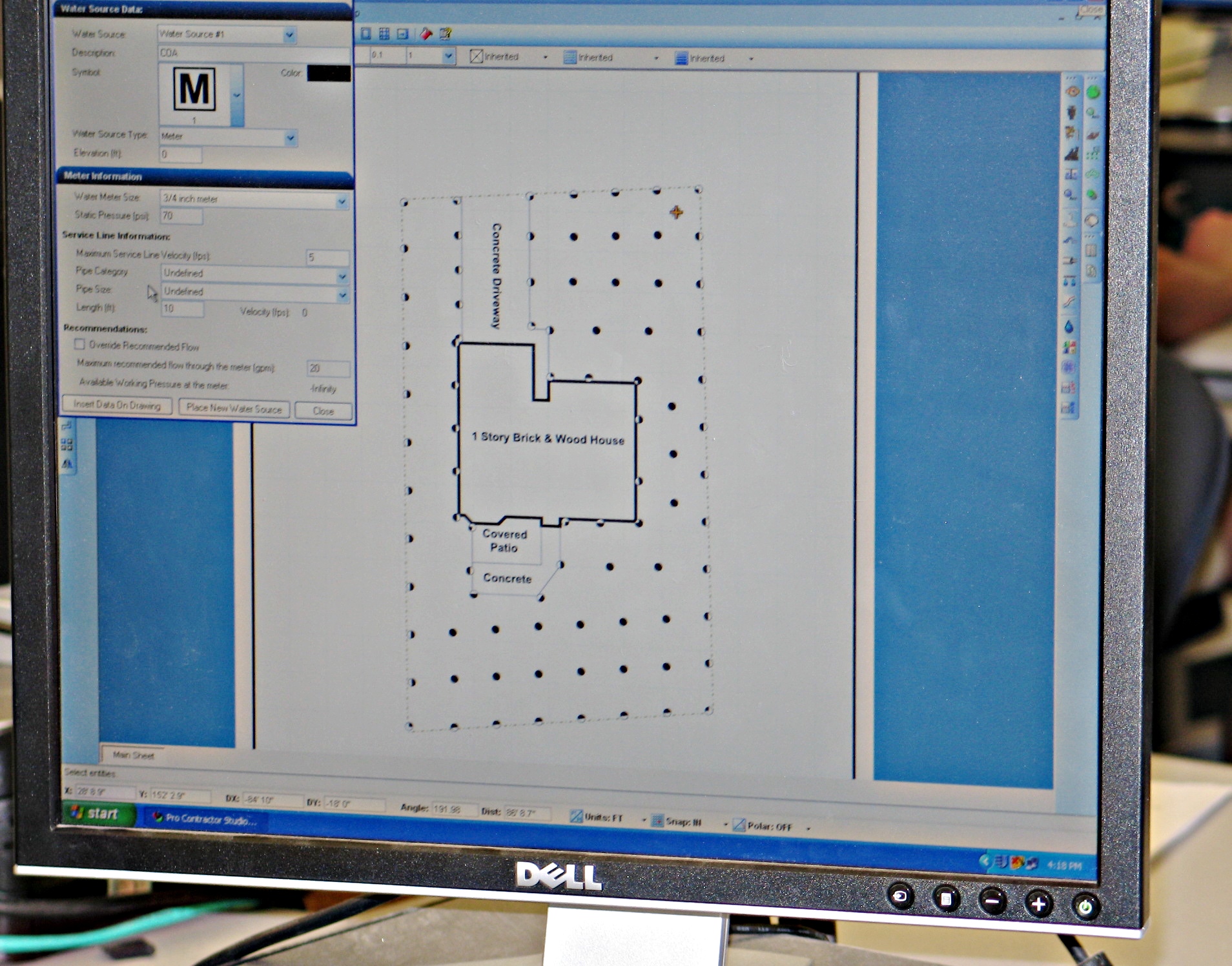Dallas, Texas, USA
November 2, 2012
The drought may have gone away – for now – but the need to conserve water when irrigating will probably always be a fact of life for those designing and managing irrigation systems on urban landscapes, according to a Texas A&M AgriLife Extension Service expert.
To help professional irrigation managers meet this need, AgriLife Extension has planned two training sessions on computer-aided design of irrigation systems in early December at the Texas A&M AgriLife Research and Extension Center, 17360 Coit Road, Dallas.

Computer-aided design software for irrigation systems does away with sketching, rulers and calculators, and automatically checks for compliance with state regulations. (Texas A&M AgriLife Extension Service photo by Charles Swanson)
Computer-aided design, commonly known as CAD, replaces older practices which involve sketching and rulers, a calculator and, in the case of irrigation systems, checking for compliance with state regulations, according to Charles Swanson, AgriLife Extension landscape irrigation specialist, College Station.
The first training is set Dec. 4-5 and will introduce students to CAD irrigation design. On both days, the instruction will last from 8:30 a.m. to 5 p.m. Cost of the course is $295. The instructors will be Swanson and Dr. Guy Fipps, AgriLife Extension irrigation engineer and professor with Texas A&M University in College Station. Enrollment is limited to 15 students.
“The Texas Commission on Environmental Quality has approved the offered course for 16 hours of continuing education credits for licensed irrigators, technicians and inspectors taking the first course,” Swanson said.
The second course on Dec. 6 will cover advanced CAD irrigation design. The fee is $165, with instruction from 8:30 a.m. to 5 p.m. Enrollment is limited to 15 students. The Texas Commission on Environmental Quality has approved an additional eight continuing education credits for licensed irrigators taking the advanced course, according to Swanson.
“This advanced course is set up as a fast-paced version of the two-day irrigation CAD workshop,” he said. “Students will complete a residential drawing from start to finish, and be given more instruction on drafting, producing materials lists, sprinkler-palette assignments and proper zoning techniques than in the original course.”
To be admitted to the advanced course, students must have taken the two-day basic course or some other computer-aided design software class and have a working knowledge of RainCAD or ProContractor Studio packages, he said.
The courses will train irrigators with a software package called Pro Contractor Studio, he said.
“There are other packages out there,” Swanson said. “What’s good about this software is that people who make it are based here in Texas. They wrote the software so that people who do irrigation plans can meet Texas irrigation rules very easily.”
For both classes, students will have the use of individual computers with the software package installed. However, they will have to purchase the software separately if they wish to use it after the course is finished, he said.
From his experience, about half of those starting the class are usually still doing their irrigation plans by hand, Swanson said.
“By hand, I mean with pencil, paper and ruler,” he said. “It can take you anywhere from one to four hours total do a good irrigation plan, and then you have to go back and measure everything and do calculations by hand.”
The advantage of using a CAD program is that the software is automatically doing the math as the irrigator lays out the plan on screen, Swanson said.
“You can install a sprinkler and say ‘what’s the flow, friction loss, what size pipe do I need,’ and it does it all for you,” he said. “And then, once you have a plan, if there is something wrong or you need to change something, you can always just go on the computer and you edit it. You don’t have to start all over or have your design covered with eraser marks making the design look more professional to your client.
“This means the irrigator saves a lot of time, plus he or she has a professional drawing they can use to market their plan to clientele versus a hand-drawn paper,” he said. “The software will also produce a materials list to help the irrigator bid out the job.”
To register for either the two-day course or the one-day advanced course, go to https://agriliferegister.tamu.edu and enter the keyword “CAD.”